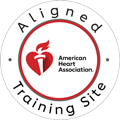In life-threatening emergencies, CPR (Cardiopulmonary Resuscitation) plays a crucial role in keeping someone alive until professional help arrives. Rescue breathing, an important part of traditional CPR, helps restore breathing and oxygen flow to someone who has stopped breathing or is struggling to breathe.
This technique can make all the difference, particularly in cases of drowning, drug overdose, or respiratory-related cardiac arrest. Learning CPR, including rescue breathing, ensures you’re prepared to take swift, effective action in emergencies.
CPR Classes Tampa, a certified American Heart Association (AHA) training site, provides essential, hands-on CPR certification courses, equipping individuals with the skills needed to save lives.

What is Rescue Breathing in CPR?
Rescue breathing, a core component of CPR, involves delivering breaths into a person’s lungs to provide much-needed oxygen. This method is critical when someone is unable to breathe on their own or has low oxygen levels, such as in situations of near-drowning, overdose, or certain types of cardiac arrest.
By providing oxygen through rescue breaths, you help to keep vital organs, including the brain, functioning until natural breathing can be restored or emergency services arrive.
In CPR, there are two primary approaches: hands-only CPR and traditional CPR with rescue breathing. Hands-only CPR focuses solely on chest compressions, making it easier to teach and implement in emergency situations, especially for bystanders unfamiliar with full CPR techniques.
Call Us Now
Get the Best CPR Class in Tampa Today!
However, while hands-only CPR can be effective in sudden cardiac arrest cases, situations like drowning or overdose require a combination of chest compressions and rescue breathing to be effective. Traditional CPR with rescue breathing addresses the underlying need for oxygen in the blood and increases the victim’s chances of survival.
Why Learning Rescue Breathing is Crucial
The purpose of rescue breathing is to ensure oxygen continues to reach the brain and other vital organs when natural breathing is compromised. Brain cells begin to die within minutes of oxygen deprivation, so rescue breathing serves to bridge this gap, keeping organs alive and functional.
The additional oxygen provided by rescue breathing can make a significant difference in recovery, as it buys precious time for professional medical intervention.
Learning rescue breathing as part of CPR training offers several benefits. First, it increases your ability to respond effectively to a wide variety of emergencies, including respiratory-related incidents.
CPR courses that include rescue breathing techniques are typically more comprehensive, covering how to respond to different scenarios and populations, such as infants and children. This level of preparation is invaluable, as it builds confidence and ensures you know how to respond effectively when every second counts.
Step-by-Step Guide to Rescue Breathing
Understanding the step-by-step process of rescue breathing is crucial for applying this life-saving skill effectively. Here’s a basic guide to performing rescue breathing in an emergency:
- **Check the Victim’s Airway**: Before beginning rescue breaths, make sure the airway is clear. Tilt the victim’s head back and lift their chin to open the airway. Look for any visible obstructions in the mouth and remove them if possible.
- **Head-Tilt, Chin-Lift Technique**: This technique helps open the airway and is essential for successful rescue breathing. Place one hand on the victim’s forehead and gently tilt the head back, while using the other hand to lift the chin.
- **Delivering Breaths**: After clearing the airway, pinch the victim’s nose shut and create a seal over their mouth with yours. Give two slow breaths, each lasting about one second, and watch to see if the chest rises. Each set of rescue breaths should follow every 30 chest compressions.
- **Mouth-to-Mouth vs. Barrier Device**: If available, use a barrier device like a face mask to deliver breaths. These devices reduce contact, protecting both the rescuer and the victim. To use a barrier device, follow the same technique but place the mask securely over the victim’s nose and mouth.
- **Tips for Effective Breaths**: Ensure each breath is effective by watching the chest rise. Avoid rapid or forceful breaths, as this can overinflate the lungs and may cause additional harm. Deliver the breaths slowly and consistently, ensuring the chest rises and falls each time.
- **Common Mistakes to Avoid**: Some common mistakes include delivering breaths too quickly, failing to tilt the head back sufficiently, or not watching for the chest to rise. Practicing these techniques in a training environment can help you avoid these errors and perform CPR with confidence.
Key Tips for Effective Rescue Breathing
Ensuring effective rescue breathing requires a few important tips. First, always double-check that the airway is open to avoid breathing into a blocked passage. Giving too much air can lead to over-inflation of the lungs, causing potential complications. Deliver each breath slowly, using just enough air to make the chest rise visibly.
For those concerned with safety, using Personal Protective Equipment (PPE) like face masks or shields can provide a barrier between you and the victim. These devices allow you to perform mouth-to-mouth breathing without direct contact, helping to reduce the risk of cross-contamination while still providing effective breaths.
Additionally, maintaining a steady rhythm in CPR is essential. Standard guidelines recommend performing 30 chest compressions followed by 2 rescue breaths. When performing CPR on infants and children, the technique changes slightly. For instance, breaths should be smaller, and compressions should be gentler and more controlled. CPR certification courses offer in-depth training on these variations to ensure rescuers are well-prepared for any age group or emergency situation.
The Role of Professional Training in Mastering Rescue Breathing
Mastering rescue breathing and CPR takes more than just reading a guide. Professional training offers real-time guidance, allowing participants to practice and refine their skills under the supervision of experienced instructors.
CPR Classes Tampa offers a hands-on, stress-free environment where students can learn CPR and rescue breathing with the support of AHA-certified instructors. Professional training also ensures that students practice the techniques correctly, reducing the risk of errors during an actual emergency.
Another advantage of professional CPR training is that it keeps you up-to-date with the latest guidelines and best practices. The AHA regularly updates its guidelines, and trained professionals stay current on new information that can improve CPR effectiveness.
For those who have already received certification, regular renewals and practice sessions are essential to maintain skills and confidence. CPR Classes Tampa provides these updates, along with refresher courses for continued competence in life-saving techniques.
Empower Yourself to Save a Life
Learning rescue breathing is an essential skill for anyone who wants to be prepared in an emergency. From understanding how to open an airway to delivering breaths that provide life-sustaining oxygen, rescue breathing is a critical component of CPR that every responder should know.
By learning and practicing these techniques, parents, caregivers, and everyday people can make a significant impact, potentially saving lives.
If you’re ready to take the next step, consider enrolling in a CPR training course with CPR Classes Tampa.
The knowledge and hands-on experience you gain could make the difference between life and death in an emergency. Be proactive, gain confidence, and empower yourself with the skills you need to respond effectively in any situation.


